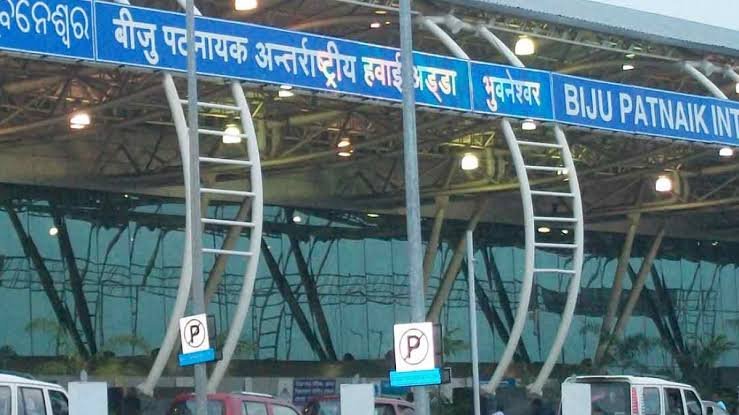Travel Guides & Articles
Andaman’s untouched charms: Essential tips for mindful island escapes, hidden beaches, and local adventures | Travel

The first thing I remember is squinting in the sun and trying not to trip over my suitcase as we walked straight from the airport to the pier at Port Blair. One moment, it was traffic and tarmac. The next, it was just me staring at the biggest stretch of water I had ever seen. My first time on an island, and I was not ready for how the ocean seemed to stretch endlessly. That was when I knew this trip was going to be different.
The Andaman Islands are not about all-night beach parties or crowded promenades. They are for those who want a holiday that feels unhurried, where the clock does not matter and the waves are the main soundtrack. After a few trips here, I have realised a few simple choices can turn a good Andaman trip into an unforgettable one.
1. Don’t skip Port Blair
Many see Port Blair as a stopover, but it deserves a couple of days. The Cellular Jail light show brings the island’s layered history to life. Joggers Park offers a surreal sunset view of the airport runway from above. Hole-in-the-wall cafés serve crisp dosas and steaming momos. Day trips to Ross Island, Baratang’s limestone caves, and Jolly Buoy’s coral beds keep you happily busy, with turtles making an appearance if you are lucky.
2. Rent a scooter on every island
A scooter is freedom here. On my second trip, we rented a scooter on every island, and it completely changed the way we experienced them. You can pull over at hidden coves, feel the occasional drizzle on your face, and take detours that tour cars miss. Riding with the wind in my hair let me soak up every view, every sound, and every small moment the islands have to offer.
3. Take the government ferry
Forget the glossy private ferries with air-conditioned cabins. The government ferry gives you something better: the freedom to step out on deck, stand next to the captain’s cabin and watch flying fish race across the surface. Let your hotel in Port Blair arrange tickets a couple of days ahead, and you will set sail with the wind whipping through your hair and an uninterrupted ocean view that you will never get while sitting inside.
4. Embrace slow evenings
When the sun sets, the pace slows to a whisper. Stock up on snacks, bring a board game, or simply sit outside and listen to the surf. This is the time to soak up the quiet rhythm of the islands and enjoy long, unhurried conversations as the day melts into night.
5. Stay a night at Neil Island
Neil is all about stillness. The sunrise and sunset here are not just beautiful, they stir something within you. Stroll barefoot along the sandy shoreline in the early morning, the calm crash of waves echoing across the island. You will likely find it empty, except for your footprints. By the time you leave, you will be wondering why it took you so long to visit.
6. Scuba dive at Havelock
Havelock is more than its famous Radhanagar Beach. At Kalapathar, sunrise turns the sea into a shifting palette of blues. But it is underwater where the island truly stuns. Forty minutes of beginner scuba puts you in a world where your breath is the loudest sound and parrot fish flicker past like living confetti. I even spotted an octopus on my first dive, a rare surprise my instructor said took him years to witness. Evenings here are best spent watching the sky fade into the sea.
Top travel tips and anecdotes
Eat like a local: Don’t miss Annapurna Cafeteria in Port Blair for fresh dosas and affordable Indian meals. Evening pier vendors serve momos and fried snacks that are perfect for a casual bite.
Hidden shopping gems: Skip touristy markets and check small stalls across the islands. I picked up a pearl necklace sixteen years ago that still looks new.
Plan your itinerary: Each island has a lot to offer. Map your days carefully to hit popular spots at the best times. Plan your evenings too, because after sunset, the islands slow down and you might be left with little to do. Families with kids should consider hotels with breakfast and dinner packages.
Scuba diving in Havelock: Book your dive slots in advance and always go with registered companies to ensure safety and the best experience.
Little Andaman: If you plan to visit, treat it as a separate trip or add an extra week. The pace is slower, accommodations are homestays or simple lodges, and local guides make the experience unforgettable. Luxury options are very limited, so plan accordingly.
Timing matters: Government ferries run on strict schedules. Let your hotel arrange tickets a couple of days ahead to save hassle and enjoy the deck view.
In the end, the Andamans give you more than photographs. On my last trip, I stayed up through the night at a beachside resort in Havelock just to watch the blue glow of twilight before sunrise. Coconut trees swayed, crabs scurried across the sand, and the waves hummed a rhythm that made time feel irrelevant. That is the real Andaman charm, and it stays with you long after you have left the shore.
Similar articles for you
Get vacation-ready! Up to 80% off on top picks for trolley bags
₹2500″>Travel smarter, not harder: Your guide to affordable trolley bags under ₹2500
Duffles and backpacks at up to 60% off on Amazon; Top picks to buy now!
Beyond basics: Fun and fashionable backpacks for girls; Top 8 picks
Travel Guides & Articles
Ranchi Airport eyes growth with new connectivity plans

Ranchi’s Birsa Munda Airport is set to witness more flight operations soon, with a new transit service to Bhubaneswar already launched. According to airport director R. R. Mourya, four additional routes are currently under consideration, highlighting the airport’s aim to strengthen air connectivity across the region.
Currently, only two airlines operate flights from Ranchi, but there are expectations of increased activity in the upcoming winter schedule. Although exact destinations are yet to be confirmed, Mourya revealed that Akasa Air had earlier shown interest in Ranchi operations, though the plan did not materialise.
The airport’s strong performance in passenger satisfaction has been another milestone. Rising from the 34th position last year to fifth place in the Airports Authority of India’s survey, the achievement reflects improved infrastructure and services. Mourya credited the efforts to enhance facilities, ensuring travelers have a more comfortable waiting experience.
Several infrastructural upgrades have been completed recently, including 300 square meters of new seating space and an additional lounge that was inaugurated last year. Food services have been expanded, and restroom renovations are already 70% finished. A dedicated parking zone for commercial vehicles has also been introduced.
Despite the optimism, Ranchi’s flight operations have temporarily decreased from 27 to 24. This drop is due to the reorientation and rescheduling of certain services. For instance, one route was shifted to Deoghar, while a Ranchi-Patna direct flight was restructured via Kolkata. However, Mourya assured that passenger convenience from Jharkhand remains unaffected.
Looking ahead, authorities plan to further upgrade passenger amenities within the next six to twelve months. With the addition of more airlines and continued infrastructure development, Ranchi’s Birsa Munda Airport is positioning itself as a rising hub in eastern India’s aviation network.
Travel Guides & Articles
The costliest chai in India: How credit cards sell you the lounge dream – Money Insights News

I open Twitter on travel days and see the same posts.
A tray of snacks, a cup of chai, soft chairs in the background, and a caption that says free lounge access with my card. Many people post it and celebrate it. I felt the same when I held multiple cards. Lounge entry felt like a small upgrade, so I told friends to get the same perk.
Then I started reading my statements line by line.
Annual fees after the first year. Spend targets to waive fees. Caps on visits that run out, too. Foreign currency markups on every swipe abroad. Reward values that shift without notice.
That is when I surrendered all my credit cards. I wrote about that decision here: I paid my bills on time and never paid interest. Here is why I quit credit cards anyway.
Since then I look at the lounge photo differently. The chai feels free in the moment, yet the bill often sits elsewhere. It sits in the annual fee. It sits in the spend you do only to keep a waiver. It sits in the forex markup that can exceed the value of the food on your plate. Miss one payment, and the interest can turn that visit into the costliest snack of the year.
This piece is a simple breakdown of that math. Before the next lounge selfie, it helps to ask one question. What did I truly pay for this plate and this chair.
The Annual Fee And The Spend Target
Let us start with the simplest cost. The fee.
When I held multiple cards, the first year felt easy. Free welcome, free visits, free chai. The second year was the turn. Renewal hit. I told myself the lounge perk made it worth it. Then I did the math.
A fee is not a line on a brochure. It is money out of your pocket. If a card costs a few thousand rupees and you visit a lounge three or four times in a year, you have already paid a high price per visit before you even sit down.
Many cards add a condition on top. Spend a large amount in the year and the fee will be waived. That sentence sounds harmless. In real life it changes behaviour.
Think about how people chase that target. I did it too. You bring forward purchases. You choose the card even when UPI or a debit card would have been cleaner. You add an extra order to a sale because the counter is close. You pay a bill early only to push the number up. None of these choices feel wrong in the moment. Together they create spend you would not have done at the same pace. The waiver feels like a win. The extra spend is the real payment.
Caps are the next surprise. Complimentary access is rarely open ended. There are quarterly limits or annual buckets. If your travel is lumpy, you can hit the cap in a single busy month. The next visit is billed. Add-on cards often draw from the same bucket, so a family of four can use up the allowance without noticing. The benefit that looked rich at sign-up becomes thin when you actually need it.
Here is a simple check you should use.
Ask yourself three questions.
- If the card had no lounge access, would I still pay this renewal fee.
- If the only reason I am swiping today is to hit a waiver, would I buy this item otherwise, at this time, at this price.
- If I expect two or three lounge visits in the year, would a direct paid entry on those days cost less than the fee.
Answering honestly is uncomfortable. It was for me. I realised I was paying for a feeling of access rather than a service I used often. That is why I surrendered my cards. If you fly every week, the math can favour a premium card. If you fly a few times a year, the fee and the target can turn a cup of lounge chai into an expensive habit.
In short, the bill for the lounge rarely shows up at the lounge. It hides in renewals, in targets that push spending, and in limits that reduce real use. Once you see that clearly, the next section becomes important. The foreign currency markup that attaches itself to every trip abroad.
The Foreign Currency Markup That Follows You Abroad
Think of a normal trip. You glide into the lounge, click a photo, sip chai, and board. The real bill starts after you land. Every coffee, taxi, museum ticket, and hotel swipe overseas carries a small extra line on your card. That line is the foreign currency markup.
Most Indian credit cards charge about 2 to 3.5 percent on every foreign transaction. Then GST gets added on that fee. The brochure writes it as a neat percentage. On a real trip it feels different.
I noticed this when I still had cards. One family trip. Roughly ₹1,20,000 spent abroad. My statement showed two extra lines I had ignored for years:
- International Markup Fee
- IGST on International Markup
At a 3.5 percent markup, that was ₹4,200. Add 18 percent GST on that fee, about ₹756 more. Total ₹4,956. No one at a counter asked me to pay it. It just appeared on the bill later. That single trip’s markup could have paid for a few lounge entries outright.
Where it adds up
- Every swipe overseas. Cafes, taxis, pharmacies, attractions.
- Online buys in foreign currency. Software, courses, subscriptions, hotel portals that bill in USD or EUR.
- Hotel deposits and car rentals. Pre-authorisations get added and released later. Rate changes in between can create small losses.
- Dynamic currency conversion. The terminal asks, “Pay in INR or pay in local currency.” Choose local currency. INR at the machine often bakes in a poor rate on top of the bank markup.
Run your own “trip test”
- Add up last trip’s foreign spends.
- Multiply by your card’s forex rate.
- Add 18 percent GST on that fee.
- Compare this number with what you actually ate and drank in lounges on that trip.
If the markup plus GST is bigger than your lounge consumption, then the lounge was not free. You paid for it through the markup.
Why this matters for lounge lovers
Many people keep a premium card mainly for international lounge access. The same card then collects 3 percent to 3.5 percent on almost every spend during the trip. If a family spends ₹1,50,000 abroad, a 3.5 percent markup plus GST is roughly ₹6,195. That is real money for a silent line item.
What about zero-forex cards
Some cards advertise zero forex markup. Read the conditions. Often there is a higher annual fee, a cap, or narrow categories. If you travel very often, a clean zero-forex product can work. If you take one or two trips a year, the fee can wipe out the benefit.
Small habits that save a lot
- Always choose to pay in the local currency on the terminal.
- Avoid cash withdrawals on credit cards overseas. Cash advance fees and interest start from day one.
- For online purchases, check the billing currency before you click pay.
- Keep one card for domestic use and one for foreign spends so you can track markups easily.
When I finally laid my statements side by side, the picture was clear. The lounge photo felt free. The markup paid the bill. This was one more reason I surrendered my cards. Next, let us talk about the slow leak that many people miss at home. Rewards that change value and give you less for the same fee.
Before You Renew: A Simple Audit That Works
One note before we wrap. I do not use credit cards now. I surrendered them. Still, I suggest this audit to anyone who cares about value. It is quick, honest, and helps you decide if lounge access is worth it for you.
The five-minute audit
- Count your lounge visits: Last twelve months only.
- Write the annual fee: For each card that promised lounge access.
- Per-visit cost: Fee divided by actual visits.
- Add the forex leak: On your last foreign trip, multiply total overseas spend by your card’s forex rate, then add 18 percent GST on that fee.
- Reality check: Is per-visit cost plus forex leak higher than what you actually ate or drank in lounges. If yes, the lounge is not free.
Small rules that save real money
- Do not chase fee waivers: If you are buying only to hit a target, count that extra spend as a cost.
- Track the cap: Quarterly or yearly limits apply. Add-on cards share the same pool.
- Kill markup at the counter: Always pay in local currency overseas. Avoid cash withdrawals on credit cards.
- Right tool for the job: Keep one simple card for daily use. Use a separate travel card only when you travel.
- Auto-pay in full: One late fee can wipe out a year of perks.
- Downgrade fast: If your fee per visit is high, ask for a waiver or move to a lower-fee product.
- Buy access when needed: If you expect two or three visits a year, paid entry on those days may cost less than a premium fee all year.
Disclaimer
Note: This article relies on data from fund reports, index history, and public disclosures. We have used our own assumptions for analysis and illustrations.
The purpose of this article is to share insights, data points, and thought-provoking perspectives on investing. It is not investment advice. If you wish to act on any investment idea, you are strongly advised to consult a qualified advisor. This article is strictly for educational purposes. The views expressed are personal and do not reflect those of my current or past employers.
Parth Parikh has over a decade of experience in finance and research. He currently heads growth and content strategy at Finsire, where he works on investor education initiatives and products like Loan Against Mutual Funds (LAMF) and financial data solutions for banks and fintechs.
Travel Guides & Articles
IRCTC to lead India’s participation at International Tourism Expo Vietnam 2025 with ASEAN-India Pavilion

NEW DELHI: The Indian Railway Catering and Tourism Corporation (IRCTC), a Government of India enterprise, has been entrusted with the responsibility of organising India’s participation in the prestigious International Tourism Expo (ITE) Vietnam 2025.
This comes after Prime Minister Narendra Modi announced 2025 as the ASEAN-India Year of Tourism, marking a renewed commitment by India to strengthen its cultural, economic, and tourism ties with ASEAN countries.
This expo is being organised from 4 to 6 September this year at the Saigon Exhibition and Convention Centre (SECC) in Ho Chi Minh City, Vietnam.
The Prime Minister’s bold proclamation essentially outlines the pivotal role of tourism in improving people-to-people connectivity, fostering mutual prosperity, and strengthening the bonds of friendship between India and the ASEAN countries.
According to an official source, IRCTC is setting up an exclusive ASEAN-India Pavilion that will showcase a diverse range of tourism offerings from India. These include the country’s rich cultural heritage, spiritual and wellness packages, natural beauty, adventure activities, and premium travel products such as the world-class IRCTC luxury trains: the Maharajas’ Express, the Golden Chariot, and the Buddhist Circuit luxury AC train.
Vipra Pandey, Consulate General of India, inaugurated the ASEAN-India Pavilion in Ho Chi Minh City.
-

 Business1 week ago
Business1 week agoThe Guardian view on Trump and the Fed: independence is no substitute for accountability | Editorial
-
Tools & Platforms4 weeks ago
Building Trust in Military AI Starts with Opening the Black Box – War on the Rocks
-

 Ethics & Policy1 month ago
Ethics & Policy1 month agoSDAIA Supports Saudi Arabia’s Leadership in Shaping Global AI Ethics, Policy, and Research – وكالة الأنباء السعودية
-

 Events & Conferences4 months ago
Events & Conferences4 months agoJourney to 1000 models: Scaling Instagram’s recommendation system
-

 Jobs & Careers2 months ago
Jobs & Careers2 months agoMumbai-based Perplexity Alternative Has 60k+ Users Without Funding
-

 Education2 months ago
Education2 months agoVEX Robotics launches AI-powered classroom robotics system
-

 Podcasts & Talks2 months ago
Podcasts & Talks2 months agoHappy 4th of July! 🎆 Made with Veo 3 in Gemini
-

 Education2 months ago
Education2 months agoMacron says UK and France have duty to tackle illegal migration ‘with humanity, solidarity and firmness’ – UK politics live | Politics
-

 Funding & Business2 months ago
Funding & Business2 months agoKayak and Expedia race to build AI travel agents that turn social posts into itineraries
-

 Podcasts & Talks2 months ago
Podcasts & Talks2 months agoOpenAI 🤝 @teamganassi



















